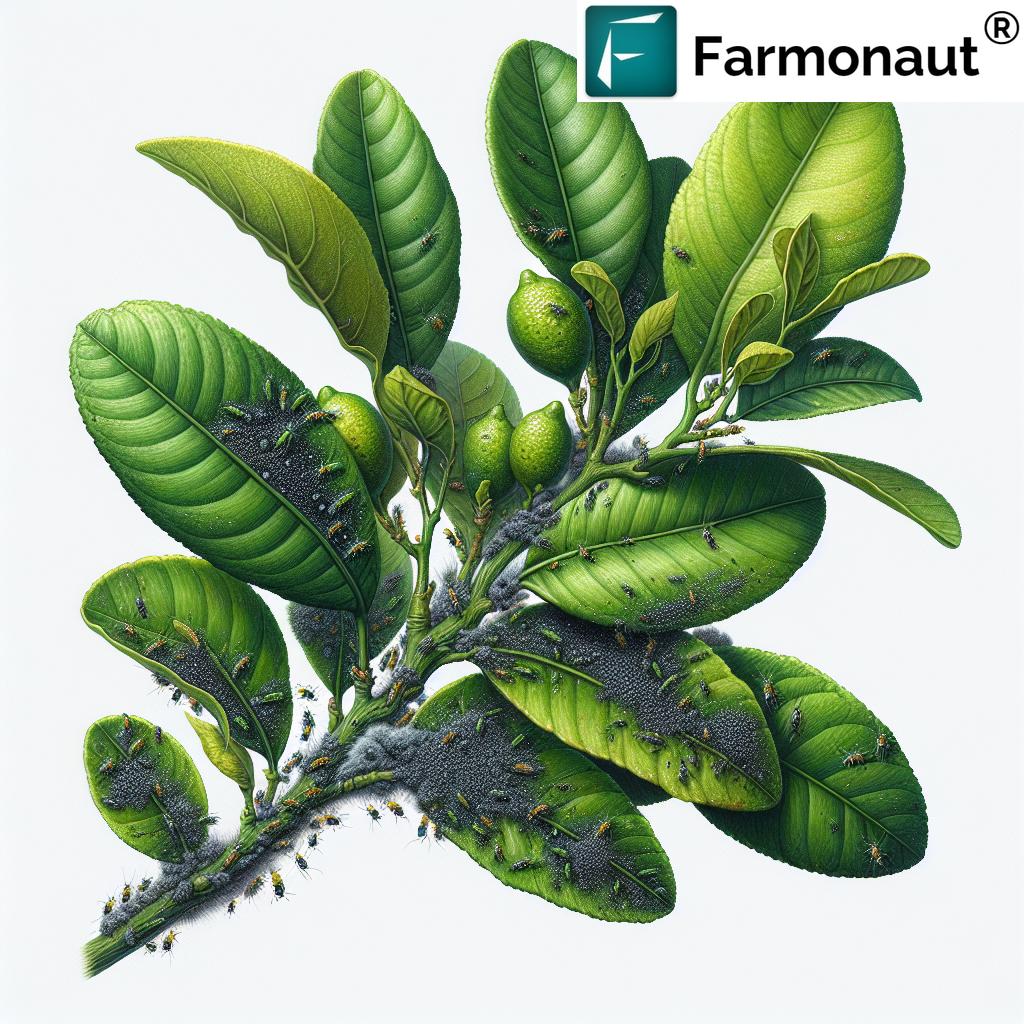Pests of Lemon Trees: Top 7 Citrus Protection Tips
“Up to 40% of lemon crop losses are caused by pests like aphids and citrus leaf miners annually.”
Introduction: The Threat of Lemon Tree Pests
Lemon (Citrus limon) trees are valued worldwide for their tart fruits, ornamental appeal, and aromatic foliage. However, these advantages come with a distinct challenge—pests. Lemon trees are susceptible to a variety of pests that can threaten leaf health, fruit yield, and overall productivity. From aphids and citrus leafminers to scale insects and mites, the risks are diverse and significant.
Understanding which pests commonly afflict lemon trees, the damage they cause, and how to use integrated pest management for citrus is crucial for anyone involved in lemon cultivation—from backyard gardeners to commercial orchardists. In this comprehensive guide, we’ll explore the most prevalent pests, their symptoms, and the science-backed strategies to protect your citrus crops, including expert advice on how to get rid of aphids on lemon trees, citrus leafminer control, and how to tackle sooty mold on lemon trees.
For those looking for the next step in precision pest management, Farmonaut’s satellite-powered platform provides real-time data and actionable insights for citrus pest management, crop health, and resource efficiency.
“Effective integrated pest management can reduce lemon tree pest damage by over 60% compared to chemical-only methods.”
Common Pests Affecting Lemon Trees
Let’s examine the most common pests affecting lemon trees, their symptoms, the damage they inflict, and why vigilance is necessary for any citrus grower. Each pest listed here can be the root cause of a reduction in fruit yield, unsightly foliage, or even tree death if left unchecked.
1. Aphids (Toxoptera citricida)
- Description: Small, soft-bodied, sap-sucking insects that cluster on tender new growth. (source)
- Symptoms: Deformed, curled leaves; stunted twig and branch growth; sticky honeydew on foliage that encourages sooty mold on lemon trees.
Importance: High populations cause significant nutrient drain and open up avenues for secondary infections. - Key Concern: Aphids are a major vector of various plant viruses.
2. Citrus Leafminer (Phyllocnistis citrella)
- Description: Tiny nocturnal moth larvae burrow into leaves, creating silvery trails (“mines”) just beneath the surface. (source)
- Symptoms: Winding trails within leaves, leaf distortion, and inhibited photosynthesis.
- Key Concern: Particularly damaging to young trees, reducing their establishment and growth.
Learn more: Citrus leafminer control strategies below.
3. Citrus Red Mite (Panonychus citri)
- Description: Microscopic red mites that feed on cell sap on the undersides of leaves. (source)
- Symptoms: Stippling, bronzing of leaves, and eventual defoliation during intense infestations—especially under dry conditions.
- Key Concern: Loss of leaf area decreases fruit set and sugar production.
4. Scale Insects (California red scale, Cottony cushion scale)
- Description: Small, dome-shaped or flat insects that affix themselves to stems, leaves, or fruit. ( source )
- Symptoms: Yellowing leaves, stunted growth, secretion of sticky honeydew, and sooty mold development.
Severe infestations may cause twig dieback and premature fruit drop. - Importance: Some species (California red scale) are notorious for developing resistance to insecticides, making integrated controls vital.
See: How to treat scale insects on lemon trees.
5. Citrus Psyllid (Diaphorina citri)
- Description: Tiny sap-feeding insect that is a primary vector for the deadly citrus greening disease (HLB). (source)
- Symptoms: Twisted leaves, leaf distortion, and in the long term, overall decline in tree vigor.
- Importance: Rapid identification and control is key due to seriousness of citrus greening.
6. Citrus Bud Mite (Aceria sheldoni)
- Description: Minute mites that attack flower and leaf buds. (source)
- Symptoms: Deformed leaves, flowers, and fruit, leading to reduced harvest quality and lower market value.
- Key Concern: Young tender growth is most vulnerable to severe damage.
7. Citrus Rust Mite (Phyllocoptruta oleivora)
- Description: Tiny mites that cause a russet finish or “bronzing” on mature fruit. (source)
- Symptoms: Russeted, brown discoloration of fruit skin; rough, corky surfaces (russeting) leading to weakened and less-marketable produce.
Other notable pests that may occasionally affect lemon trees: Lemon tree borer (Oemona hirta), whiteflies (Dialeurodes citri), and spider mites. These may not be as common but can cause substantial localized damage.
Lemon Tree Pest Management Comparison Table
A quick at-a-glance reference for the most important lemon tree pests:
| Pest Name | Visible Symptoms | Estimated Damage (% Yield Loss) | Common Locations on Plant | Recommended Management Techniques |
|---|---|---|---|---|
| Aphids (Toxoptera citricida) | Deformed, curled leaves, sticky honeydew, sooty mold | 10–25% | New shoots, undersides of young leaves, tips of twigs |
Pruning infested growth, natural predators (ladybugs), insecticidal soaps or oils. How to get rid of aphids on lemon trees |
| Citrus Leafminer (Phyllocnistis citrella) | Winding, silvery trails in leaves, leaf distortion | 5–15% | Young, tender leaves |
Timely pruning, pheromone traps, parasitic wasps, avoid unnecessary nitrogen applications. Citrus leafminer control |
| Citrus Red Mite (Panonychus citri) | Leaves stippled/bronzed; premature leaf drop | 10–30% | Undersides of leaves, occasionally fruit stems |
Miticides, predatory mites, monitor during dry seasons. Mite infestation on citrus leaves |
| Scale Insects (Red, Cottony) | Yellow leaves, waxy or cottony bumps, sticky honeydew, sooty mold | 15–35% | Stems, undersides of leaves, fruit skin |
Horticultural oils, insecticidal soaps, natural enemies (ladybugs & parasitic wasps) How to treat scale insects on lemon trees |
| Citrus Psyllid (Diaphorina citri) | Leaf distortion, shoot stunting, poor fruit set | 5–20% | Young leaves, shoot tips | Remove infested branches, release predatory insects, monitor for citrus greening |
| Citrus Bud Mite (Aceria sheldoni) | Flower and fruit deformities, leaf twisting | 5–20% | Buds, flowers, young fruit | Prune affected tissues, apply sulfur sprays, maintain orchard sanitation |
| Citrus Rust Mite (Phyllocoptruta oleivora) | Bronzed/russeted fruit skin, corky patches, leaf damage | 10–15% | Fruit skin, leaves, twigs | Use of miticides, timely harvest, monitoring fruit surface regularly |
Integrated Pest Management (IPM) Strategies for Citrus
Controlling lemon tree pests requires more than just reactionary spraying. Integrated pest management for citrus is a holistic approach—combining cultural, biological, and chemical strategies—for effective, sustainable pest control. Here’s what it means:
A. Cultural Controls
- Pruning: Remove infested or deformed leaves, twigs, and branches. Focus especially on dense areas where air circulation is poor and pests thrive. Clean up fallen leaves regularly, as these can harbor larvae.
- Water Management: Avoid over-watering to reduce root disease that weakens trees. Keep the ground clean and dry to limit habitats for insects.
- Fertilization: Practice balanced fertilization—excess nitrogen can make new growth more “lush” and susceptible to pests such as aphids and citrus leafminer. Test your soil and apply fertilizer only as needed for optimal growth and resistance.
B. Biological Controls for Lemon Tree Pests
- Natural Predators: Attract ladybugs, lacewings, and predatory mites to feed on aphids and other soft-bodied insects. Letting native predators increase keeps pest populations in check.
- Parasitic Wasps: Introduce specific wasps (e.g., Tamarixia radiata) that target Diaphorina citri (citrus psyllids) or Phyllocnistis citrella (leafminer). These wasps lay eggs inside larvae, controlling pest outbreaks biologically.
C. Chemical Controls (Used with Care)
- Insecticidal Soaps and Oils: For aphid and scale infestations, apply insecticidal soaps or horticultural oils on leaves and affected stems. These suffocate pests but are less harmful to beneficial species when used in the evening or early morning.
- Miticides: Use miticides to treat serious mite infestation on citrus leaves. Always follow label directions and avoid application during flowering to protect pollinators.
- Systemic Insecticides: Reserved for severe or resistant infestations (not routine). Systemics are absorbed by the tree and poison pests that feed on sap. Avoid overuse to prevent pest resistance and protect beneficial populations.
Important: Always rotate chemicals to avoid pest resistance and stick to recommended intervals.
Benefits of IPM for Lemon Tree Pest Control
- Reduces the risk of pest resistance compared to chemical-only strategies
- Protects pollinators and beneficial insects
- Integrates environmental, economic, and social sustainability in citrus cultivation
Citrus Protection Tips: Top 7 Lemon Tree Pest Management
Here are the most effective, field-tested citrus protection tips—with practical methods for home gardeners and professional orchardists alike. Applying these citrus pest management guidelines minimizes losses, maintains robust leaves and foliage, and supports healthy and productive lemon trees.
-
How to Get Rid of Aphids on Lemon Trees
- Early Intervention: At the first sign of stunted, sticky, or curled leaves, wash the affected area with a strong jet of water to dislodge aphids.
- Biological Control: Release ladybugs or lacewings in the orchard or garden; these predators rapidly consume aphids.
- Insecticidal Soaps: Mix and apply a soap spray, covering both sides of the leaves, stems, and undersides. Repeat weekly if infestations persist.
- Limit Excess Nitrogen: Over-fertilizing increases tender, succulent growth that attracts aphids.
- Monitor for Honeydew and Sooty Mold on Lemon Trees: Remove heavily infested foliage to prevent sooty mold, which impedes photosynthesis and reduces yield.
-
Citrus Leafminer Control
- Prune Regularly: Trim off and destroy infested leaves and shoots, especially on young trees.
- Pheromone Traps: Hang these traps to disrupt moth mating and monitor population levels.
- Parasitic Wasps: Consider commercial releases of Ageniaspis citricola where available, targeting larvae naturally.
- Avoid Lush Flushes: Applying excess nitrogen can cause tender flushes, which are particularly vulnerable. Space out fertilization during leafminers’ active periods.
- Light Oil Spray: Neem or horticultural oil can deter egg-laying adults when applied monthly throughout the growing season.
-
Controlling Scale Insects on Lemon Trees
- Regular Inspection: Closely examine leaf undersides, stems, fruit, and bark for immobile scale colonies.
- Apply Horticultural Oil: Spray during dormant or cool weather, targeting all affected areas to suffocate scale insects without harming beneficials.
- Prune and Destroy: Remove and burn branches with severe infestations (do not compost!).
- Biological Control of Scale: Encourage native ladybugs or import Rodolia cardinalis (for cottony cushion scale).
- Integrated Chemical Use: Spot treat with insecticidal soaps if monitoring indicates population spikes. Avoid spraying during peak bee activity.
-
Mite Infestation on Citrus Leaves
- Monitor Weekly: Use a hand lens to inspect leaf undersides for red or rust mites, especially in hot, dry periods.
- Release Predatory Mites: Biological controls such as predatory Phytoseiulus or Neoseiulus species keep populations of Panonychus citri and others in check.
- Targeted Miticides: Only use if biological and cultural methods fail. Spot treat, targeting only the affected foliage, and rotate products annually.
- Prompt Watering: Strong, forceful irrigation can dislodge mites.
-
Preventing Citrus Psyllid & Greening Disease
- Vigilant Monitoring: Psyllids are difficult to see but look for signs of twisted new shoots and inspect with a magnifier.
- Remove and Destroy: Prune infested shoots immediately to prevent spread.
- Natural Enemies: Tamarixia radiata parasitic wasps are released in some regions for biocontrol.
- Avoid Imports: Strictly quarantine new citrus plants; do not bring in scion wood or seedlings from areas affected by citrus greening disease (HLB).
-
Managing Citrus Bud Mite & Rust Mite Damage
- Sanitation: Remove all distorted fruit, flowers, and leaves. Keep orchard floors clear.
- Sulfur Sprays: Light dusting of horticultural sulfur in spring, before flowering, can reduce populations of Aceria sheldoni and Phyllocoptruta oleivora.
- Harvest Timely: Pick fruit as soon as it matures—prolonged exposure increases rust mite damage.
- Monitor Leaf and Fruit Surfaces: Early detection allows for less intensive interventions.
-
Soil and Resource Management as Preventive Control
- Maintain Tree Health: Healthy, unstressed trees are more resistant to pests. Adequate watering, proper fertilization, and well-drained soils are key.
- Mulching: Use organic mulch to deter weed growth and conserve soil moisture, reducing pest habitat.
- Satellite-Based Crop Health: Using digital monitoring (like Farmonaut’s platform) for early warning of pest hotspots helps target intervention.
Our platform offers satellite imagery to spot areas of stress and inform management actions throughout the season. Explore large-scale citrus plantation monitoring.
Farmonaut Satellite Solutions for Citrus Plant Health & Pest Management
Precision monitoring is transforming how we approach citrus pest management. At Farmonaut, we empower farmers, agronomists, and orchard managers with affordable, real-time crop health monitoring—directly from satellites and AI-driven analytics. Here’s how our agricultural technology makes a difference in lemon and citrus orchards:
- Satellite-Based Crop Health Monitoring: Instantly locate areas of poor growth, low yield potential, or unnatural color (photosynthesis drop) that may signal pest infestation, water deficit, or disease pressure.
- Jeevn AI Advisory: Personalized, AI-powered recommendations based on multi-temporal NDVI and crop status, guiding you on when to inspect, apply treatments, or adjust fertilization.
- Resource & Carbon Footprinting: Keep your orchard productive and sustainable. Farmonaut offers carbon footprint tracking and irrigation insights—helping you document reduced chemical usage and better environmental compliance.
- Blockchain Traceability: Transparent supply chains build market trust. Learn how lemon and citrus products can be fully traceable from orchard to consumer.
- Crop Loan & Insurance Verification: Our satellite-based monitoring helps verify farm status for easier crop loans and insurance claims.
Try Farmonaut’s app on Android or iOS for instant field-level analysis.
Developers and large farms can integrate our satellite and weather data: Farmonaut Satellite API
(API Developer Docs)
Preventive Measures for Lemon Tree Pest Management
Prevention always outweighs cure in lemon and citrus pest management. Adopting a preventive mindset means we’re proactive with monitoring, exclusion, and maintaining orchard health at every stage.
- Regular Monitoring: Inspect leaves, shoots, and branches every 7–10 days, especially during warm periods or early flush growth.
- Healthy Tree = Resistant Tree: Robust foliage and vigorous shoots naturally resist insects and tolerate minor pest presence without crop loss.
- Quarantine New Plants: Isolate new citrus introductions. Check thoroughly for invisible scales, mites, leafminers, or psyllid nymphs. Pay particular attention to materials sourced from regions known for citrus greening disease.
- Sanitation: Remove fallen fruit, old leaves, and dead wood—these are breeding zones for fungi and insects.
- Natural Barriers & Trap Crops: Consider inter-planting with trap crops (like nasturtium for aphids) or physical barriers (sticky tapes, mesh) for orchards with chronic pest issues.
FAQ: Lemon Trees & Citrus Pests
- How do I recognize early signs of pest infestation on lemon tree leaves?
- Look for leaf curling, yellowing, stippling, sticky honeydew, sooty mold, or winding mines on new foliage. Close inspection with a hand lens can reveal clusters of aphids, scale bumps, or tiny moving mites on leaf undersides.
- What is the best strategy for citrus leafminer control?
- Combine regular pruning of damaged leaves, use pheromone traps to disrupt the moth life cycle, and encourage natural enemies such as parasitic wasps. Avoid high-nitrogen fertilization during vulnerable periods.
- How does sooty mold affect lemon trees?
- Sooty mold is a black fungal layer that develops on leaves and fruit where honeydew excretions from aphids, scales, or whiteflies accumulate. It blocks sunlight, reduces photosynthesis, and can weaken the overall health of the tree.
- What’s the safest way to treat scale insects on lemon trees?
- Start with non-chemical options: prune off infested parts, encourage natural predators like ladybugs and parasitic wasps, and use horticultural oils or insecticidal soaps. Only use systemic insecticides where populations threaten tree health.
- Why is integrated pest management important for lemon trees?
- It reduces the risk of pesticide resistance, preserves pollinators and diversity, and provides effective, long-term solutions to pest outbreaks in lemon and citrus orchards.
- How do I use Farmonaut’s platform for pest monitoring in citrus?
- With Farmonaut, you can monitor vegetation health, detect areas of stress early (which may indicate an infestation), and receive AI-driven recommendations on deploying pest management actions—saving time and chemicals while improving yield.
Conclusion: Healthy Lemon Trees Require Smart Pest Management
Lemon trees add beauty and bounty to home gardens and commercial plantations alike—but pests threaten their promise. From aphids causing sooty mold to leafminers disrupting photosynthesis, understanding each pest’s habits, damage patterns, and weak points is essential.
Sustainable citrus cultivation relies on integrated pest management for citrus—incorporating cultural, biological, and when needed, chemical controls for long-term success. Regular monitoring, balanced fertilization, healthy soil management, and savvy use of new technologies (including Farmonaut’s satellite insights) can dramatically reduce economic losses while keeping lemon tree leaves healthy and fruit yield high.
Embrace these strategies, take action early, and enjoy the aromatic, fruitful rewards your lemon trees can deliver season after season.
















